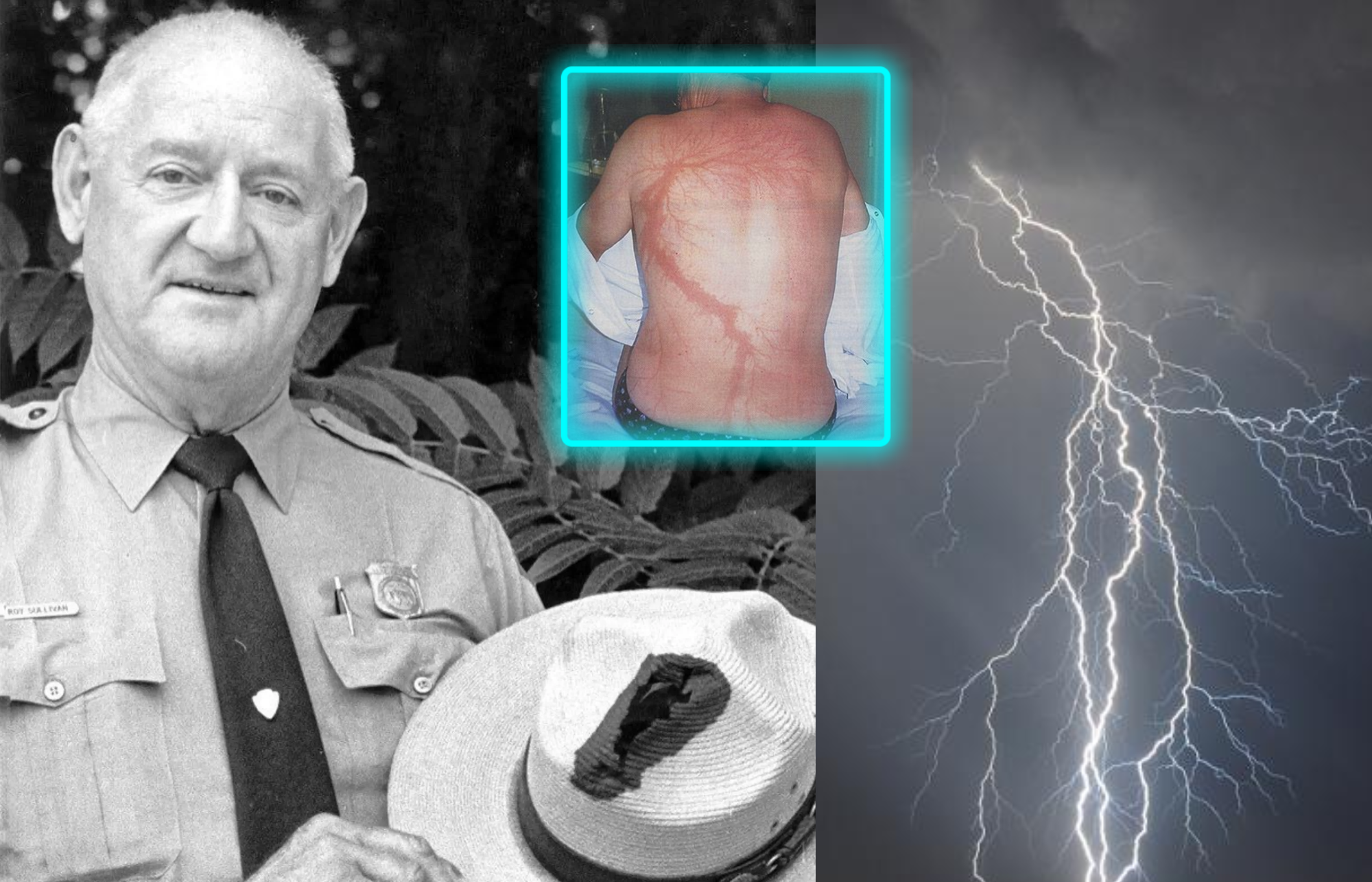Roy Cleveland Sullivan nació el 7 de febrero de 1912 en Virginia, Estados Unidos. Fue guardabosques en varios parques nacionales de su país y es conocido por haber sobrevivido a siete descargas de rayos entre 1942 y 1977. Esto lo convierte en la persona que ha sido alcanzada por rayos la mayor cantidad de veces registrada en la historia, según el Libro Guinness de los récords. En este artículo, te guiaremos por cada uno de los 7 eventos donde Roy fue alcanzado por rayos.

Los 7 rayos que alcanzaron a Roy Sullivan
El primer encuentro de Sullivan con un rayo se produjo en abril de 1942 mientras trabajaba en el Parque Nacional Shenandoah, en las montañas Blue Ridge. Él estaba huyendo de una torre de vigilancia que se estaba incendiando cuando fue alcanzado por un rayo directo en la pierna derecha. A pesar de que sobrevivió, perdió la uña del dedo gordo del pie y quedó con marcas de quemaduras en la pierna.

Sullivan no pudo evitar un segundo encuentro con un rayo en julio de 1969, mientras conducía su camión. Esta vez quedó inconsciente, con las cejas quemadas y con su reloj de pulsera destruido.
Los siguientes incidentes ocurrieron en 1970 y 1972. En el primero, Sullivan fue alcanzado por un rayo mientras estaba en su jardín y su hombro izquierdo quedó chamuscado. En el segundo, un rayo le prendió fuego en el cabello cuando se encontraba en una caseta de vigilancia. Ya para entonces, Sullivan había sido apodado “The Spark Ranger” (“El guardabosques chispa” o “El pararrayos humano”).

En agosto de 1973, Sullivan volvió a ser impactado cuando se encontraba en el interior de su vehículo. En aquella ocasión, tanto su cabello como sus piernas se quemaron. Como si eso no fuera suficiente, Sullivan se lesionó el tobillo y se quemó el cabello nuevamente en junio de 1976, cuando un rayo lo alcanzó durante una caminata.
El último rayo que recibió fue durante un viaje de pesca en junio de 1977. En aquella oportunidad, Sullivan quedó con quemaduras en el pecho y el estómago. Según los registros, después de esa fecha, el guardabosques no volvió a ser impactado por algún rayo.
Y por si fuera poco, no fueron los rayos los responsables de su muerte.
A pesar de las lesiones que sufrió en cada uno de los encuentros, Sullivan sobrevivió a todas las descargas. Es importante destacar que ser alcanzado por un rayo es sumamente peligroso, ya que puede causar la muerte en cuestión de segundos. Según los Centros para el Control y la Prevención de Enfermedades de EE. UU. (CDC, por sus siglas en inglés), la probabilidad de ser alcanzado por un rayo solo una vez en una vida útil de 80 años es inferior a una entre un millón. Mientras que la probabilidad de ser golpeado dos veces por un rayo durante toda la vida es de una entre nueve millones.

Después de su última descarga, Sullivan decidió retirarse como guardabosques y trabajar en un parque temático. Algunos expertos creen que el hecho de que Sullivan fuera un guardabosques, y pasara mucho tiempo en las montañas, aumentó sus posibilidades de ser alcanzado por un rayo. Sin embargo, también hay quienes sugieren que su mala suerte podría estar relacionada con algún factor genético o incluso psicológico.
A pesar de todo, la vida de Sullivan no fue fácil. Además de sus encuentros con los rayos, el guardabosques también tuvo que enfrentarse a otros desafíos. En 1969, por ejemplo, su esposa murió en un accidente de tráfico. Incluso, habiendo sobrevivido a tantos rayos, Sullivan se quitó la vida en septiembre de 1983, a los 71 años.

En última instancia, la historia de Roy Cleveland Sullivan es un testimonio de la fuerza de la humanidad frente a la adversidad, y un recordatorio de la necesidad de respetar y entender el poder de la naturaleza. Ya sea que se trate de una descarga eléctrica de la naturaleza, una tormenta o cualquier otra fuerza natural, debemos tomar medidas para protegernos y estar preparados para lo inesperado. La vida puede ser frágil, pero también es sorprendente y resistente.
Podría interesarte: Hisashi Ouchi, el hombre radioactivo mantenido con vida durante 83 días.

